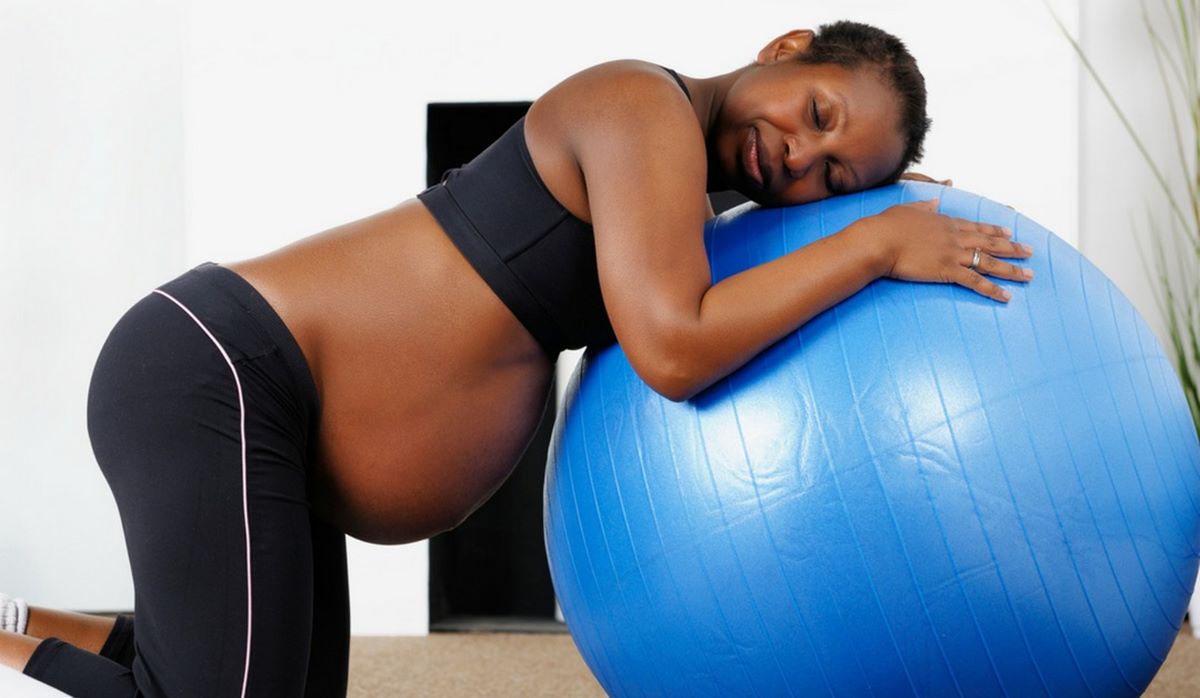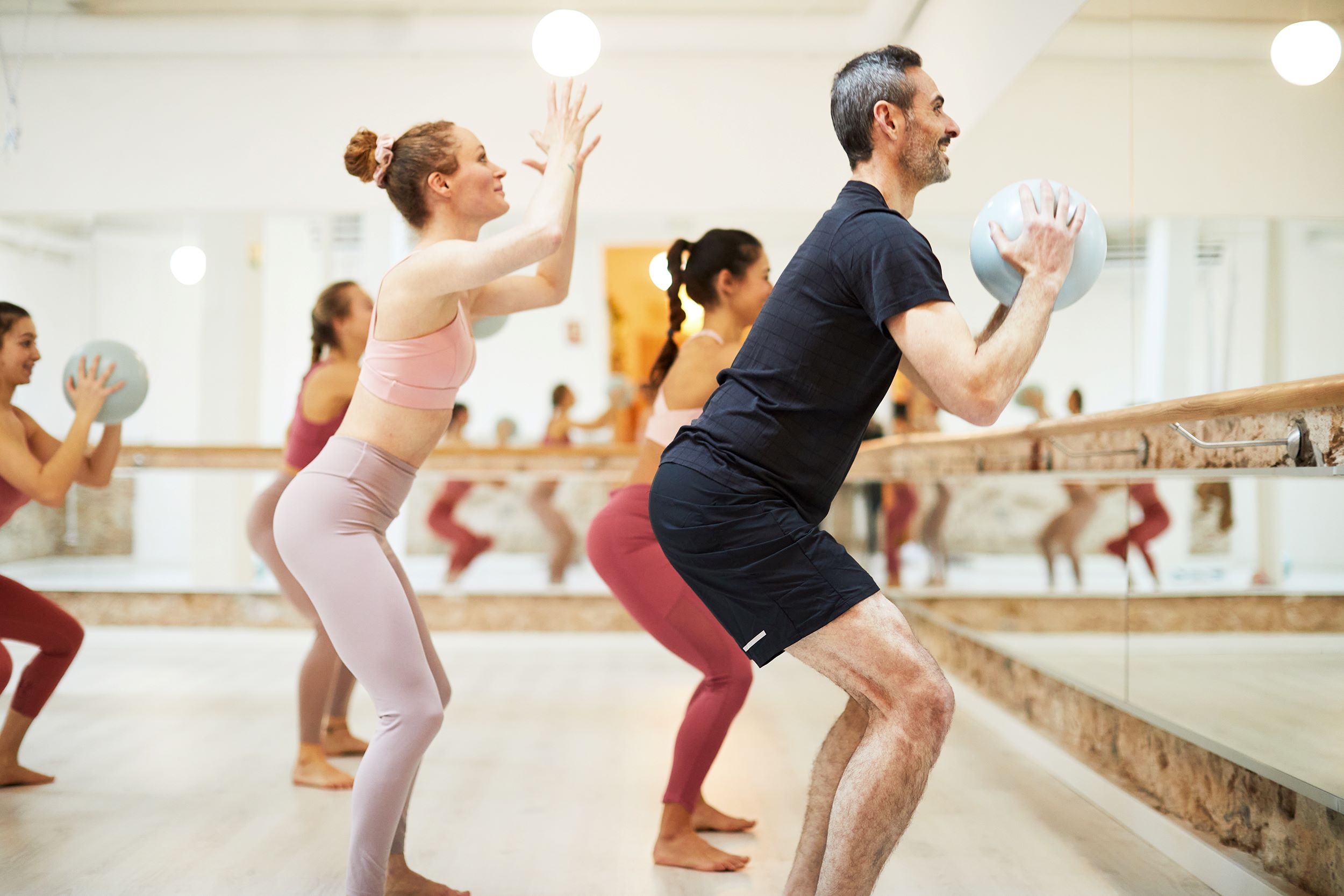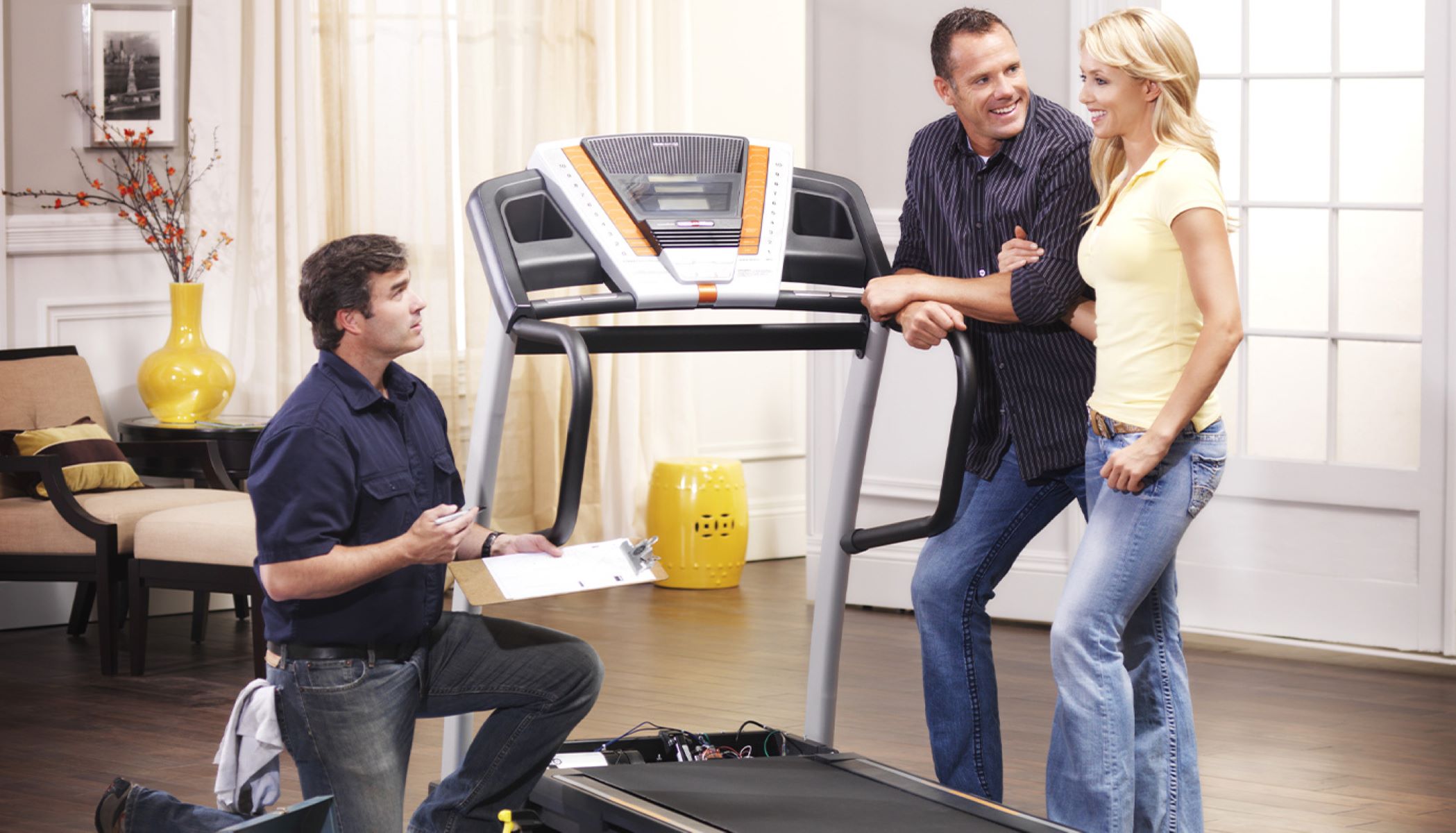Home>Misc>Featured>How To Use An Exercise Ball To Induce Labor


Featured
How To Use An Exercise Ball To Induce Labor
Modified: May 22, 2024
Learn how to use an exercise ball to naturally induce labor in this featured guide. Discover effective techniques for a smoother childbirth experience.
Introduction
Welcome to the world of exercise balls, where bouncing and rocking on a simple piece of equipment can potentially bring about the miraculous process of labor induction. Pregnancy can be an exciting and joyous time, but as the due date approaches, many expectant mothers can become eager to kick-start the birthing process naturally. While there are various methods that claim to help induce labor, using an exercise ball is gaining popularity due to its effectiveness and ease of use.
An exercise ball, also known as a birthing ball or Swiss ball, is a large inflatable ball that can be used for strengthening exercises, stretching, and stability training. However, in recent years, it has found a new purpose in helping expectant mothers during labor. The gentle movements and positions performed on an exercise ball can encourage the progress of labor by helping the baby descend into the pelvis and assisting with dilation and effacement of the cervix.
In this article, we will explore the benefits of using an exercise ball to induce labor, discuss how to choose the right size ball for your needs, provide details on the precautions to take before using an exercise ball, and guide you through a series of exercises and positions that can help with labor induction. Additionally, we will discuss how using an exercise ball can be combined with other natural methods to increase their effectiveness. It’s important to note that while exercise balls can be a helpful tool, it’s crucial to prioritize safety and consult with your healthcare provider before trying any new methods to induce labor.
So, if you’re ready to embrace the power of the exercise ball and potentially bring your little one into the world, let’s delve into the world of labor induction with an exercise ball!
Benefits of using an exercise ball to induce labor
Using an exercise ball during labor offers numerous benefits that can facilitate a smoother and more comfortable birthing experience. Let’s take a look at some of the advantages:
- Promotes optimal fetal positioning: When sitting on an exercise ball, your pelvis is tilted forward, which encourages the baby to align their head with the birth canal. This optimal positioning can help facilitate a more straightforward and efficient delivery.
- Increases pelvic mobility: The gentle movements and exercises performed on an exercise ball can help to improve the mobility of your pelvis. This allows for better flexibility and can aid in the progress of labor by promoting the opening and widening of the pelvic outlet.
- Relieves back and pelvic pressure: The use of an exercise ball can offer relief from the discomfort and pressure often experienced in the lower back and pelvis during pregnancy. Sitting or gently bouncing on the ball can help to alleviate these sensations and provide temporary relief.
- Encourages active labor: By using an exercise ball, you can engage in gentle movements, rocking, and bouncing, which can stimulate contractions and encourage an active labor. The rhythmic movements can also help to distract from the intensity of the contractions, providing a sense of control and relaxation.
- Facilitates pelvic floor relaxation: The bouncing and rocking motions on an exercise ball can help to release tension in the pelvic floor muscles. This relaxation can enhance the effectiveness of contractions and promote a smoother transition through the later stages of labor.
It’s important to remember that while these benefits are notable, the effectiveness of using an exercise ball to induce labor may vary for each individual. It is always recommended to consult with your healthcare provider to ensure that using an exercise ball aligns with your specific needs and circumstances.
Choosing the right exercise ball
When it comes to using an exercise ball for labor induction, choosing the right size and type of ball is crucial to ensure maximum comfort and effectiveness. Here are some factors to consider when selecting an exercise ball:
- Size: Exercise balls come in various sizes, and it’s important to choose one that suits your height and body proportions. As a general guideline, when seated on the ball, your feet should comfortably touch the ground with your knees bent at a 90-degree angle. Consider referring to a size chart or consulting with a fitness professional to determine the appropriate ball size for your height.
- Weight capacity: Different exercise balls have varying weight capacities, so make sure to check the manufacturer’s recommendations to ensure the ball can support your weight.
- Material: Exercise balls are typically made from anti-burst PVC material, which is designed to slowly deflate rather than burst if punctured. Look for a high-quality anti-burst ball to ensure safety during use.
- Texture: Consider the texture of the exercise ball’s surface. Some balls have a smooth surface, while others have a textured or ribbed surface for improved grip and stability. Choose a texture that feels comfortable and secure to you.
- Inflation: Most exercise balls come with a pump for inflation. Ensure that the ball is properly inflated to the recommended size for optimal support and stability.
It is worth noting that there are exercise balls specifically designed for pregnancy and labor, often referred to as birthing balls. These may have additional features such as a non-slip surface or handles for extra support. Consider exploring these options if they align with your preferences.
Lastly, familiarize yourself with the maintenance and care instructions provided by the manufacturer. This includes proper cleaning and storage to ensure the longevity of your exercise ball.
Remember, choosing the right exercise ball is essential for comfort and safety during labor induction. Take the time to find the perfect fit and enjoy the benefits it can bring to your birthing experience.
Precautions before using an exercise ball for inducing labor
While using an exercise ball to induce labor can be beneficial, it’s crucial to take certain precautions to ensure your safety and well-being. Here are some important considerations before incorporating an exercise ball into your labor preparation:
- Consult with your healthcare provider: It is essential to discuss your intention of using an exercise ball for labor induction with your healthcare provider. They can evaluate your specific circumstances and provide guidance on whether it is safe and appropriate for you.
- Understand contraindications: Certain medical conditions or complications may make using an exercise ball for labor induction unsuitable. If you have a history of preterm labor, placenta previa, or any other pregnancy-related complications, it is important to seek guidance from your healthcare provider before using an exercise ball.
- Maintain proper posture: When using an exercise ball, it is crucial to maintain good posture to avoid strain or injury. Keep your back straight, shoulders relaxed, and engage your core muscles for stability and support.
- Use the ball on a stable surface: Ensure that the exercise ball is placed on a stable surface that provides balance and support. Avoid using the ball on slippery or uneven surfaces to prevent accidents or falls.
- Start slowly: If you are new to using an exercise ball, start with gentle movements and gradually increase the intensity and duration as your body becomes accustomed. Listen to your body and stop if you experience any discomfort or pain.
- Have a support person present: While using an exercise ball during labor, it is advisable to have a support person, such as a partner, doula, or healthcare provider, present. They can provide assistance, monitor your well-being, and help you maintain proper form and positioning.
- Combine with other relaxation techniques: Incorporate relaxation techniques such as deep breathing, meditation, or visualization along with using an exercise ball. This can enhance relaxation and manage pain during labor.
Remember, safety should always be your top priority when using an exercise ball for labor induction. Always follow the guidance of your healthcare provider and seek medical advice if you have any concerns or questions.
Exercises to promote labor induction using an exercise ball
Using an exercise ball for labor induction involves performing specific exercises and movements that can help stimulate contractions, encourage optimal fetal positioning, and promote cervical dilation. Here are a few exercises you can try:
- Pelvic tilts: Sit on the exercise ball with your feet flat on the ground, hip-width apart. Place your hands on your thighs or hold onto the sides of the ball for stability. Slowly rock your pelvis forward and backward, allowing your lower back to arch and flatten. Perform this movement for a few minutes, focusing on engaging your pelvic muscles.
- Gentle bouncing: Sit comfortably on the exercise ball with your feet flat on the ground. Begin by gently bouncing up and down, allowing the natural movement to stimulate contractions and help the baby descend into the pelvis. Maintain a relaxed and rhythmic bounce, adjusting the intensity according to your comfort level.
- Rocking movements: Sit with your feet apart, slightly wider than hip-width distance, on the exercise ball. Slowly shift your weight from side to side, allowing the ball to support your movements. This rocking motion can help the baby navigate into an optimal position for delivery.
- Circle rotations: Sit on the exercise ball and gently rotate your hips in a circular motion, first clockwise and then counterclockwise. This movement can help to relieve tension in the back and pelvis while promoting flexibility and optimal fetal positioning.
- Supported squats: Stand with your back against a wall and place the exercise ball between your lower back and the wall. Slowly lower yourself into a squat position, using the ball for support and stability. This exercise can help open the pelvis, strengthen the leg muscles, and encourage the descent of the baby into the birth canal.
- Lunges: Stand with one foot in front of the other and rest the top of your back foot on the exercise ball. Lower your body down into a lunge position, ensuring that your front knee is directly above your ankle. Slowly return to the starting position and switch sides. Lunges can promote hip flexibility and encourage the baby’s descent.
Perform these exercises in a comfortable and controlled manner. Remember to listen to your body, take breaks when needed, and stop if you experience any pain or discomfort.
It is important to note that while these exercises can be beneficial, they may not guarantee labor induction or speed up the process for everyone. Each pregnancy is unique, and it’s always best to consult with your healthcare provider before trying any new exercises or methods to induce labor.
How to perform pelvic tilts on an exercise ball
Pelvic tilts are a simple yet effective exercise that can help promote optimal fetal positioning, relieve lower back pain, and encourage dilation and effacement of the cervix during labor. Performing pelvic tilts on an exercise ball adds an extra element of support and stability. Here’s how to do it:
- Set up: Begin by selecting an appropriately sized exercise ball that allows your feet to comfortably touch the ground with your knees bent at a 90-degree angle. Sit on the ball, ensuring that your feet are flat on the floor and hip-width apart. Place your hands on your thighs or hold onto the sides of the ball for stability.
- Engage your core: Take a deep breath in and focus on engaging your pelvic floor and deep abdominal muscles. This will help provide stability and support during the exercise.
- Perform the movement: Slowly begin to rock your pelvis forward and backward while maintaining contact with the ball. As you rock your pelvis forward, allow your lower back to gently arch, and as you rock it backward, allow your lower back to flatten. This motion resembles a tilting of the pelvis. It’s important to perform the movement smoothly without straining or jerking.
- Control the range of motion: Start with a small range of motion and gradually increase it as you become more comfortable. Focus on connecting with your pelvic muscles and feeling the movement in your lower back and pelvis.
- Breathe properly: Coordinate your breath with the movement. Inhale as you rock your pelvis forward, and exhale as you rock it backward. This synchronized breathing can help promote relaxation and enhance the effectiveness of the exercise.
- Repeat and vary: Aim to perform 10 to 15 pelvic tilts in a slow and controlled manner. Take breaks as needed and repeat the exercise several times throughout the day. You can also experiment with different tempos and rhythms to find what feels most beneficial for your body.
Remember to listen to your body and stop if you feel any discomfort or pain. If you have any concerns or questions, consult with your healthcare provider before attempting pelvic tilts on an exercise ball or any other exercise during pregnancy.
Performing pelvic tilts on an exercise ball can provide relief, help prepare your body for labor, and promote a healthier and more comfortable birthing experience.
Using an exercise ball for gentle bouncing and rocking movements
Gentle bouncing and rocking movements on an exercise ball can be a soothing and beneficial technique to aid in labor induction. They help stimulate contractions, promote optimal fetal positioning, and provide relief from discomfort during the birthing process. Here’s how to incorporate these movements:
- Find a stable position: Sit comfortably on the exercise ball with your feet flat on the ground, hip-width apart. Ensure that the ball is on a stable surface to prevent any accidents or falls.
- Gentle bouncing: Begin with a gentle bounce by lightly pushing your feet against the floor. Allow the ball to rhythmically bounce up and down, focusing on the natural motion rather than forcefully bouncing. Find a pace and intensity that feels comfortable and soothing for you.
- Rocking back and forth: Another method is to rock your body back and forth while seated on the exercise ball. Shift your weight forward and backward, allowing the ball to support your movements. This rocking motion can relax your pelvic muscles and help guide the baby into an optimal position for delivery.
- Side-to-side rocking: You can also try rocking your body from side to side on the exercise ball. Maintain a gentle and controlled movement, feeling the sway from one side to the other. This rocking motion can offer relief from lower back pain and promote relaxation.
- Combine with deep breathing: While performing gentle bouncing or rocking movements, coordinate your breath. Inhale deeply through your nose and exhale slowly through your mouth. Deep breathing can aid in relaxation, reduce tension, and help manage pain during labor.
- Modify as needed: Adjust the intensity and range of motion based on your comfort level. If you feel any discomfort or find it challenging to maintain your balance, reduce the intensity or omit the movements that don’t feel right for you.
- Continue throughout labor: Experiment with different durations and frequencies of bouncing and rocking. Some women find it helpful to incorporate these movements consistently throughout labor, while others may prefer intermittent periods of bouncing and rocking for relief.
Remember, every body and birthing experience is unique. It’s important to listen to your body and adjust the movements based on your comfort and feedback. If you have any concerns or questions, consult with your healthcare provider before attempting any new exercises or movements during labor.
Using an exercise ball for gentle bouncing and rocking can aid in relaxation, provide relief, and contribute to a positive birthing experience.
Trying out different positions on the exercise ball to encourage labor progression
One of the advantages of using an exercise ball for labor induction is the versatility it offers in terms of different positions. By experimenting with various positions on the ball, you can help promote labor progression, relieve discomfort, and maintain optimal fetal positioning. Here are some positions to try:
- Seated position: Sit upright on the exercise ball with your feet flat on the floor and hip-width apart. This position promotes pelvic mobility, engages your core muscles, and encourages the baby to descend into the pelvis. You can place your hands on your thighs or the sides of the ball for support.
- Forward-leaning position: Rest your upper body on the exercise ball while kneeling on the floor. This position helps to relieve pressure on the spine, opens up the pelvis, and encourages the baby’s descent. As you lean forward, allow your belly to hang between your legs while supporting your upper body on the ball.
- Belly circles position: Kneel down in front of the exercise ball and place your forearms on the ball. Slowly roll the ball in a circular motion, gently rotating your belly. This position can help to relieve lower back pain and encourage the baby to move into an optimal position for delivery.
- Supported squat position: Stand upright with your back against a wall and place the exercise ball between your lower back and the wall. Slowly lower yourself into a squat position, using the ball for support. This position helps to open up the pelvis, strengthens the legs, and encourages the baby’s descent.
- Hands and knees position: Position the exercise ball in front of you, then rest your hands and knees on the floor with your belly over the ball. This position can help to relieve back pain, reduce pressure on the pelvis, and facilitate optimal fetal positioning. Rock your hips or sway gently back and forth for added comfort.
- Lunge position: Stand with one foot in front of the other and place the top of your back foot on the exercise ball. Lower your body down into a lunge position, ensuring that your front knee is directly above your ankle. This position aids in opening the pelvis and encouraging the baby’s descent.
Experiment with these positions, finding what feels most comfortable and effective for your body. You can also combine different positions and movements throughout labor to promote continuous progress and provide relief. Remember to listen to your body, take breaks when needed, and consult with your healthcare provider if you have any concerns or questions.
By trying out different positions on the exercise ball, you can support labor progression, enhance comfort, and optimize the birthing experience.
Combining exercise ball usage with other natural methods to induce labor
Using an exercise ball is just one of the many natural methods that can help in inducing labor. Combining the use of an exercise ball with other techniques can enhance the effectiveness of labor induction. Here are some additional natural methods that can be used in conjunction with the exercise ball:
- Walking: Taking regular walks can help stimulate contractions and encourage the baby to descend. Incorporate short walks in your daily routine to promote labor progression while maintaining an upright position.
- Acupressure: Acupressure involves applying gentle pressure on specific points of the body. With guidance from a trained professional, acupressure techniques can be used to stimulate labor and support the body’s natural processes. Consult with a licensed acupuncturist or a healthcare provider experienced in acupressure for proper guidance.
- Nipple stimulation: Gentle nipple stimulation has been found to release oxytocin, a hormone that stimulates contractions. Rolling or rubbing the nipples gently for a few minutes at a time can help trigger labor. However, it’s important to practice this method cautiously and discuss it with your healthcare provider beforehand.
- Relaxation techniques: Relaxation techniques such as deep breathing exercises, meditation, and visualization can help manage stress and promote relaxation. By keeping your body and mind in a calm state, you may encourage labor to progress more smoothly.
- Sexual intimacy: Sexual activity can release prostaglandins, which can help soften and ripen the cervix. It may also lead to oxytocin release, which can stimulate contractions. If your health permits and you are comfortable, engaging in sexual activity with your partner may help with labor induction.
- Herbal remedies: Certain herbal remedies, such as evening primrose oil and red raspberry leaf tea, are believed to have properties that can promote labor. However, it’s vital to consult with a qualified healthcare provider or a certified herbalist before using any herbal remedies during pregnancy.
It’s important to note that while these methods are considered natural, their effectiveness may vary for each individual. It’s always best to discuss your intention to try these techniques with your healthcare provider to ensure they are safe and appropriate for your specific situation.
By combining the use of an exercise ball with other natural methods, you can create a holistic approach to labor induction, increasing your chances of a smooth and positive birthing experience.
Safety considerations while using an exercise ball during labor
While using an exercise ball during labor can be a beneficial tool, it is important to prioritize safety and take certain precautions to ensure a positive and safe experience. Consider the following safety considerations:
- Consult with your healthcare provider: Before incorporating an exercise ball into your labor, discuss your intention with your healthcare provider. They can evaluate your specific situation, provide guidance, and ensure that using an exercise ball aligns with your individual needs and circumstances.
- Use the right-sized ball: Choose an exercise ball that is appropriate for your height and body proportions. When seated on the ball, your feet should be flat on the ground with your knees at a 90-degree angle. Using the correct-sized ball ensures stability and reduces the risk of accidents or instability.
- Maintain proper posture: Sit up straight and maintain good posture while using the exercise ball. This helps prevent strain or injury to your back and allows for better engagement of your core muscles.
- Ensure a stable surface: Place the exercise ball on a stable surface, such as a non-slip mat, to prevent it from rolling or slipping during use. Avoid using the ball on uneven or slippery surfaces to reduce the risk of falls or instability.
- Use a support person: Have a support person, such as your partner, doula, or healthcare provider, present during exercise ball usage. They can provide assistance and supervision, ensuring your safety and helping you maintain proper form and balance.
- Be mindful of your surroundings: Ensure that there is enough space around you when using the exercise ball to avoid collisions with objects or furniture. This will help prevent any accidents or injuries during movement or bouncing.
- Listen to your body: Pay attention to how your body feels during exercise ball usage. If you experience any pain, discomfort, dizziness, or shortness of breath, stop immediately and consult with your healthcare provider.
- Stay hydrated: Drink plenty of water throughout labor to stay hydrated, especially if you are engaging in physical activity on the exercise ball. Dehydration can impact the well-being of both you and your baby.
- Use the exercise ball as directed: Follow the instructions provided by the manufacturer regarding inflation, weight capacity, and maintenance of the exercise ball. This will ensure its proper functionality and longevity.
Remember, safety is paramount when using an exercise ball during labor. By taking these safety considerations into account and seeking guidance from your healthcare provider, you can create a safe and supportive environment for utilizing the exercise ball as a tool for labor induction.
Conclusion
Using an exercise ball to induce labor can be a beneficial and natural approach that offers numerous advantages. Its gentle movements and positions can promote optimal fetal positioning, encourage labor progression, and provide relief from discomfort during childbirth. By incorporating the use of an exercise ball into your labor preparation, you can enhance the birthing experience while maintaining safety and well-being.
Remember that choosing the right exercise ball, consulting with your healthcare provider, and taking necessary precautions are essential steps. Follow proper techniques, listen to your body, and adjust the intensity of exercises based on your comfort level. Combining the use of an exercise ball with other natural methods, such as walking, relaxation techniques, and acupressure, can further enhance the effectiveness of labor induction.
Throughout the different stages of labor, trying out various positions on the exercise ball can aid in labor progression, optimal fetal positioning, and relief from discomfort. Whether it’s gentle bouncing, rocking back and forth, or using the ball for support during squats or lunges, finding a position that feels comfortable and supportive for your body is key.
While using an exercise ball during labor has been shown to be safe and effective for many women, it’s important to consult with your healthcare provider to ensure it is appropriate for your specific situation. Each pregnancy is unique, and your healthcare provider can provide personalized guidance and recommendations. Prioritize safety, listen to your body, and seek medical advice if you have any concerns or questions.
Ultimately, using an exercise ball as a tool for labor induction is empowering and provides an active role in the birthing process. Embrace the benefits that an exercise ball can offer and create a positive and supportive experience as you welcome your little bundle of joy into the world.









